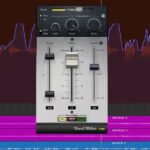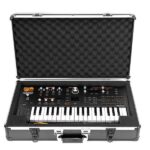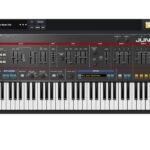Choosing the right synth software can effortlessly boost the overall quality of music. It is as important for a music producer as the right camera for a photographer and the right paintbrush for a painter.
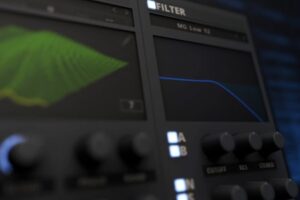
But with a score of virtual synthesizers available, navigating through this vast sea can be a daunting task.
Talking about one specific synth plugin, Massive by Native Instruments has successfully held the favorite position for many EDM products.
But with the introduction of Massive X, the choice for the best became quite confusing.
You have to consider various factors, including pricing, presets, sound production, layout, recency, synthesis type, and more.
Thus this article aims to provide a detailed comparison between the two big names of synth software, the Massive and Massive X.
We will comprehensively dive into their features, functionality, performance, user experience, pricing, and customer feedback.
And provide our final verdict about whether Massive is enough for you or if you need to upgrade to Massive X.
Contents
Background of Massive and Massive X
Massive surfaced in the music industry back in 2007 and soon became part and parcel of electronic music enthusiasts and producers alike.
This was the dream product for a massive number of EDM producers.
It reigned the VST instruments industry until the introduction of Xfer Serum by Steve Duda. The new competitor’s product was more versatile, with an uncompromised sound quality and flow.
Fast forward to 2020, the Native Instruments introduced an extension to Massive that they named Massive X.
The Massive X was aimed to compete with Xfer Serum and provide better quality mixing with more options.
However, here the question poops is there any nominal difference between Massive and Massive X? And either Massive X is really better than Massive.
Let’s find the answer by comparing both.
Comparison Between Massive and Massive X
Besides many head-on-head differences between both plugins, many primary differences can be spotted.
Talking about Massive, its wavetable synthesis and feature to manipulate and morph waveforms were game changers.
Additionally, its extensive modulation options, filter, and effects helped the product secure its position in the electronic music landscape.
Contrary to this, the Massive X came with an additional feature. Besides the basic wavetable synthesis of Massive, the Massive X modular approach to sound production is a key differentiator.
This allowed users to build complex signal chains and various routing options, opening a new world of sonic exploration.
Here is a head-on-head comparison for a more precise approach to determine which suits you the most.
1) Features and Functionality
Both variants are packed with an impressive array of tools that empower you to sculpt your sounds with precision. Here are some key highlights that distinguish between them.
Synthesis Type
Massive uses a subtractive synthesis approach. Sound production in Massive involves shaping and filtering harmonically rich waveforms.
While in Massive X, multiple synthesis techniques are utilized. Besides wavetable synthesis, this involves additional features like analog modeling and Frequency modeling.
Wavetable
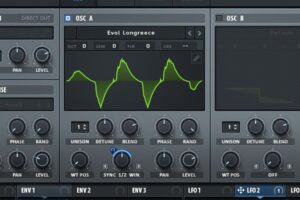
Massive comes with a basic wavetable selection that can be modulated and manipulated. While Massive X, it features an extended library of wavetables with advanced editing capabilities.
Filter and Effects
Massive offer filters like low pass, high pass, and band pass. Its built-in effects include reverb, delay, and distortion.
Contrary to this, the Massive X, with a basic Massive filter and effects, provides more advanced modulation options and effects like the dual-insert effect.
Modulation
In terms of modulation, Massive users can assign envelopes, LFOs (Low-frequency oscillators), and performer modules to modulators.
While in Massive X, drag-and-drop routing, flexible modulation sources, and the expanded range of destinations have surely advanced the game to the next level.
2) Layout
Both software exhibits nominal differences when it comes to layout. Here is a detailed comparison of their layout.
Design
The design philosophy of Massive is simple and straightforward, with an intuitive layout. Its somehow traditional look provides easy access to its different parameters like oscillators, filters, and envelopes.
Massive X design is complex and visually rich, providing space for extended features like additional wavetable editing and modulation options.
Interface Elements
The massive interface has a main window and a single view that displays its primary parameters. Sections like modulation and effects are accessible through separate tabs.
Massive X features multiple views, and panels can be rearranged and resized depending on personal preferences.
Its multiple-module display offers more workspace flexibility, ultimately helping with advanced mixing.
Visual Feedback
In Massive, parameters are represented through knobs, sliders, and graphs. It offers real-time visual feedback for modulation sources and destinations.
While in the case of Massive X, the visual feedbacks are more detailed and interactive.
It includes expanded waveform displays, advanced modulation routing visualization, and improved visualization of wavetable editing.
3) Presets
Both software offers different values for their pre-designed sound presets. Below are the important highlights.
Quantity and Variety
Massive’s library has to offer a range of sounds in multiple genres and styles. This covers various categories including bass, leads, pads, keys, and more.
Massive X, though, has a substantial number of presets, but as compared to Massive, they are significantly low. However, the available sounds are of high quality and versatile with an advanced synthesis engine.
Sound character and Complexity
Massive is known for its bold, powerful, and upfront sound. Their programming is simple and straightforward, making them instantly usable and providing space for beginners to work on the software.
Contrary to this, for Massive X, the case is different. Its presets have more advanced synthesis capabilities, which require in-depth sound design knowledge to utilize its potential fully.
Sound Design Approach
In Massive, the main focus is on traditional subtractive synthesis techniques. This includes the use of oscillators, filters, and modulations to shape the sound.
While for Massive X, its approach to sound design is complex and includes various advanced techniques like wavetable synthesis, FM synthesis, and analog modeling.
4) Integration and Compatibility
Both Massive and Massive X are software plugins. Thus, considering their integration and compatibility with various workstations and operating systems is crucial.
Massive, being an older version, is widely compatible with operating systems, including Windows and macOS.
And in terms of DAW (Digital Audio Workstations), it works smoothly with software like Ableton Live, Logic Pro, FL Studio, Pro Tools, and many more.
Massive X being an upgrade of Massive is compatible with all the above-mentioned DAWs and operating systems.
However, one important consideration here is that with advancements in technology, there may be specific system requirements or minimum specifications to run Massive X optimally.
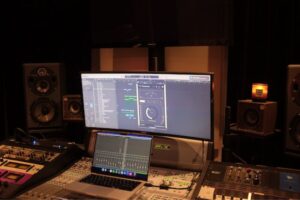
5) Pricing
Pricing is an important differentiator between both products. The built-in price for both software is the same, which is $149.
In the case of Massive, it is available as standalone software, and once purchased, users have its lifetime license without any time limitations or recurring costs.
The price for Massive X is also the same. But being a modern version, it comes with multiple add-ons and subscriptions.
This involves access to more advanced options and libraries depending on your subscription and add-ons.
Thus, though it provides some additional features, it can be difficult for individuals with budget restrictions to maintain its updates.
Our Final Verdict
The sound production services of both variants, the Massive and Massive X, are exceptional. Massive is compatible, budget-friendly, and offers sufficient options and functionality for sound production.
Contrary to this, Massive X, though it comes with higher price ranges, offers exceptional modulations, synths, and functionality. It has successfully taken the game of VST instruments to the next level.
While deciding which plugin suits you the best, it relies on many factors, like your budget and expertise in using these plugins.
However, the use of Massive X is strongly recommended due to its exceptional functionality and the advancement in technology it offers.
Ultimately the choice of any music software lies with personal preferences.
Either its Massive or Massive X, both synths will empower you to unlock your sonic potential and create music that captivates listeners. Happy synthesizing!



